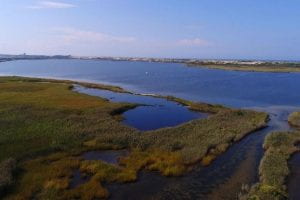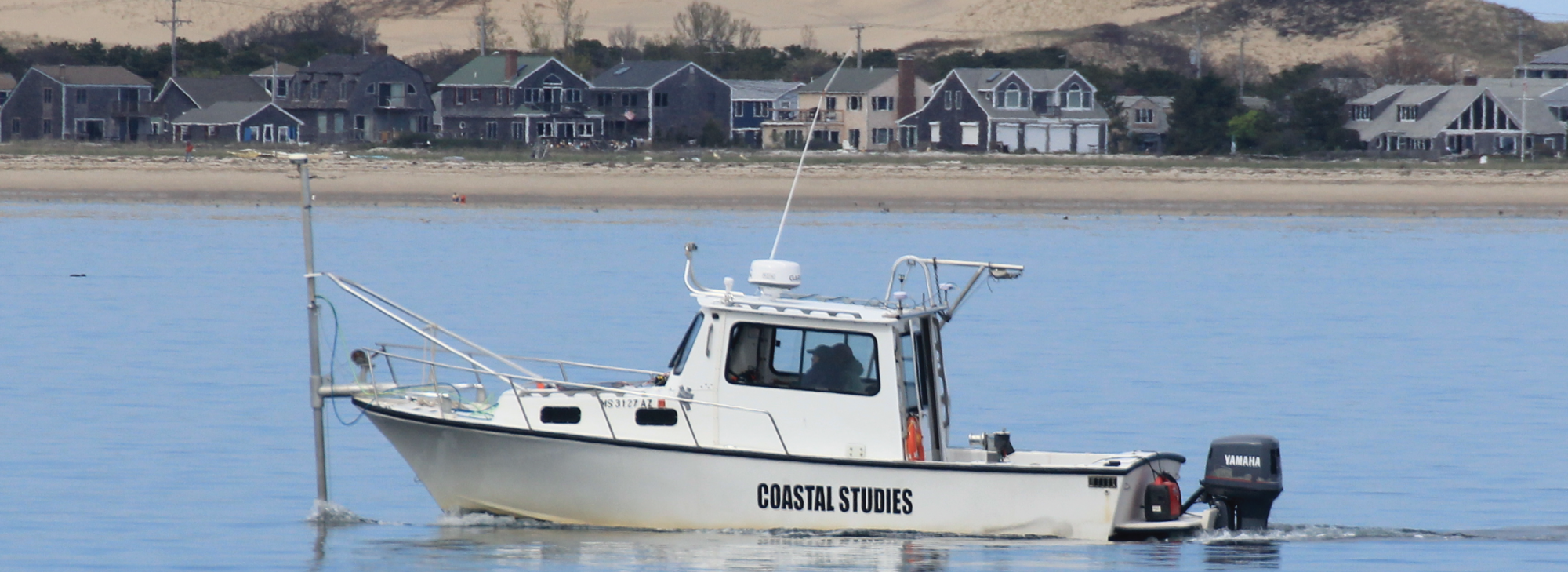East Harbor is a 140 hectare back barrier salt marsh within Cape Cod National Seashore that underwent partial tidal restoration in 2002 after almost 150 years of tidal restriction. The area has been artificially isolated from Cape Cod Bay since 1868, when the original, roughly 300m wide inlet in the northwest of the system was filled in, reportedly to block sand from filling Provincetown Harbor.
Surveys took place in two phases in September 2017; phase 1 included acoustic surveys (September 9-15) and phase 2 included grab samples for invertebrate and sediment analysis. Sampling stations were randomly selected based on presence/absence of submerged aquatic vegetation and other factors found in the acoustic data. Data analyses were conducted at the Center for Coastal Studies during the following months. Main findings include:

- We identified 8951 individuals belonging to 84 species, with highest species diversity in vegetated areas. Vegetation provides cover and protection from predators for many smaller individuals and thus are often rich in species diversity. Although Massachusetts does not release an official list of invasive species, a literature research showed that the orange-striped green sea anemone (Diadumene lineata) is an established invader in New England waters and indeed in East Harbor (http://www.exoticsguide.org/diadumene_lineata). Four individuals were found at two different stations.
- We also detected an increase in species diversity in East Harbor, especially in mollusks, since the culvert opening. Previous studies mainly focused on mollusks as they are important ecosystem engineers, helping to structure aquatic bottom environments and providing habitat, protection, and food to a wide array of other taxa. Compared to studies from 2005 (9 species), 2009 (7 species) and 2011 (7 species) we found 24 species of mollusks in East Harbor. This result emphasizes the importance of even partial tidal restoration as restoration in East Harbor achieved an 8-fold increase in mollusk diversity over the course of 12 years. To put mollusk diversity in East Harbor in perspective: a similar study in Provincetown Harbor in 2015 found 48 mollusk species, some of which could potentially find habitat in East Harbor.
- Based on abiotic factors such as grain size metrics and organic matter content of the sediment, we could explain 84% of species distribution in East Harbor. This number is exceptionally high when compared to previously published studies conducted around New England, which achieved 21-68.9% explanation. Water column factors such as dissolved oxygen, pH and salinity also play an important part in species distribution, however, these factors are subject to change by seasons, tides, anthropogenic input and weather events and have to be monitored across seasons and years before potential inclusion as an explanatory factor. We included water column data into our model as a statistical exercise and reached 94% explanation.
Publications
Benthic Habitat Mapping in East Harbor, Truro, MA
